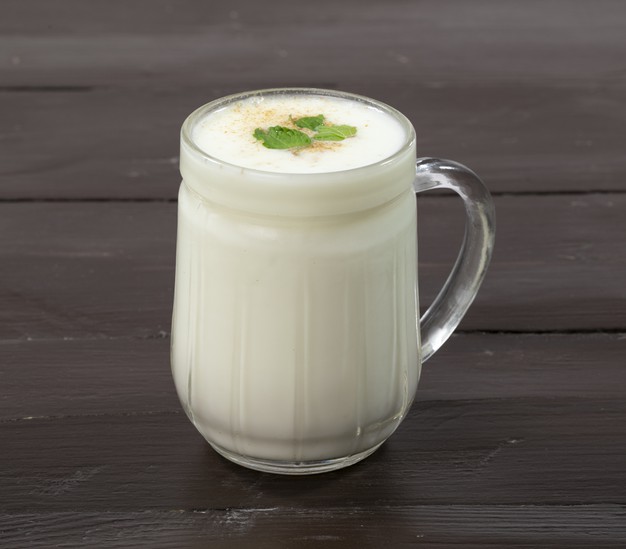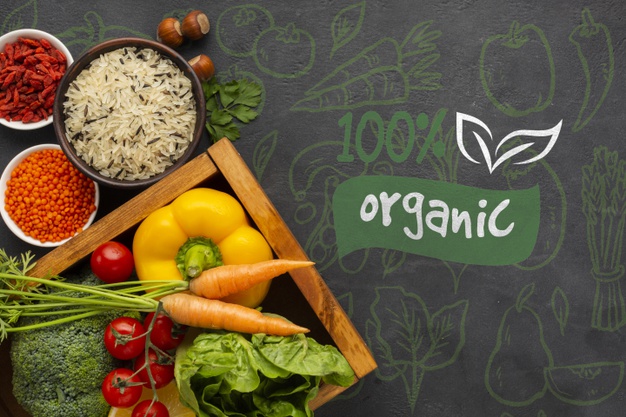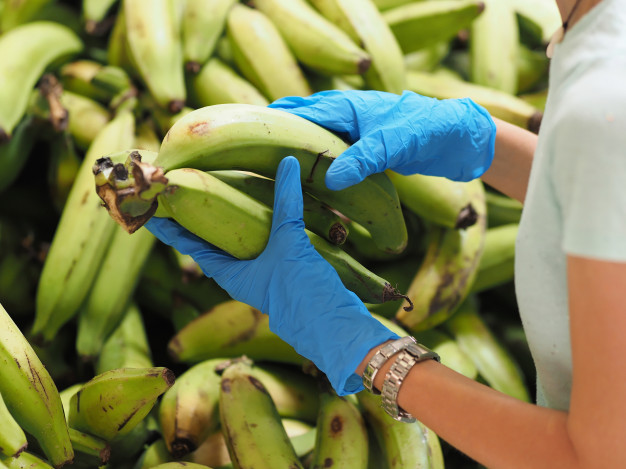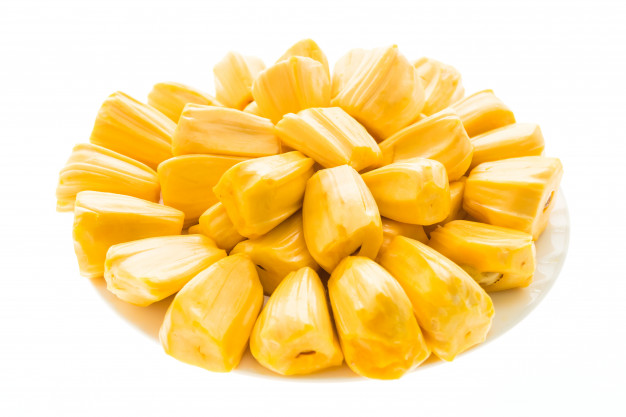Quince is one of the most ancient fruits belong to Cydonia genus. It is extremely nutritious and offers numerous health benefits.
Nutritional profile
- It contains desirable amount of carbohydrates and significantly rich in fibre
- It contains too some extent of protein as well
- It does not contain enough fat
- It contains enough moisture
- It contains several important micronutrients, which include Vitamin A, Vitamin C, Vitamin B1, B2, B3, B5, B6, B9, calcium, phosphorus, sodium, potassium, iron, selenium, zinc, magnesium and copper
- It is loaded with various important phytonutrients that exert several nutraceutical activities
Biological activity
Antioxidant activity
- It is loaded with antioxidants thus its consumption is thought to be very effective for decreasing metabolic stress
- It also helps in neutralizing free radicals, which aids in protecting every cell from free radical induced oxidative damages as a result decreases oxidative stress, hence lowers the susceptibility of developing chronic diseases
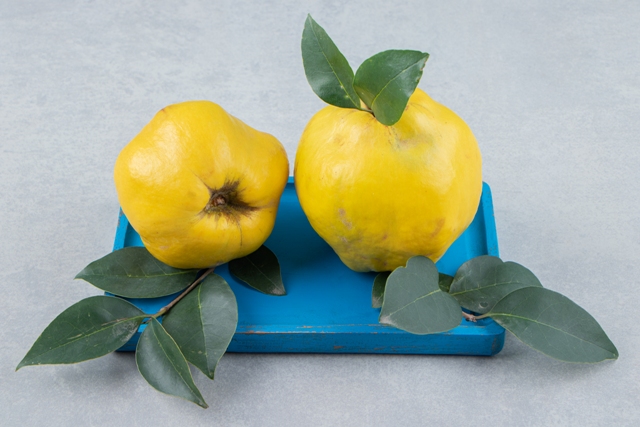
Anti-inflammatory activity
Quercetin and kaempferol are the two most important flavonols present in quince that exert anti-inflammatory activity and help to prevent inflammation by reducing the concentration of inflammatory markers within body

Antic carcinogenic activity
- Polyphenolic components of quince play vital role in reducing the risk of developing cancers as they exert anti-carcinogenic activity
- Polyphenols of quince mainly help in providing inhibitory effect on tumor growth, proliferation of cancerous cells, metastasis, angiogenesis and apoptosis, all of which are extremely important for reducing the prevalence of cancers
- Whereas its oxidative stress reducing capacity is also considered as one of the reasons of hindering the growth of malignant cells within body
Hypotensive activity
- It has been used for centuries as an important hypothensive substance
- Potassium present in quince plays important role in decreasing high blood pressure as it acts as vasodilator that helps in dilating the blood vessels, which subsequently reduces blood pressure
Health benefits
Role on immunity
- It plays vital role in boosting up the overall immunity of the body as it contains various important nutrients, which are essentially required by the body for obtaining healthy immune system
- Its antioxidant activity helps in protecting the immune cells from free radical induced oxidative damages thus helps in promoting their functionality
- It also helps in stimulating the synthesis of WBC that helps the body to fight against infections as a result helps in decreasing the prevalence of infectious diseases
- Moreover its consumption is extremely helpful for enhancing the resistance power of the body, which ultimately reduces the susceptibility of becoming ill

Role on digestive health
- Individual who suffer from digestive issues should try quince, it works like magic
- It has been traditionally used as an important preventive measure for digestive disorders
- It has seen that consumption of quince, significantly improves the symptoms of constipation. It plays vital role in stimulating bowel movement that helps in promoting regularity thus prevents constipation
- Whereas consumption of quince extract is also very effective for reducing the susceptibility of inflammatory bowel diseases and ulcerative colitis as its antioxidant and anti-inflammatory activities play vital role in protecting the gastrointestinal tract from oxidative and inflammatory damages
- Its consumption is also very useful for promoting colonic health as it helps in decreasing the prevalence of colon tissue damage
- It is also very effective for treating stomach ulcer or peptic ulcer. It has seen that quince is very effective against H. pylori, a bacteria which is considered as one of the most leading causes of peptic ulcer
- Consumption of quince extract is also very helpful for improving the symptoms of GERD or gastro esophageal reflux disease
- It is also associated with improving the symptom of burping, aversion, vomiting and abdominal pain


Role on circulation
- It contains adequate amount of iron, zinc, copper, which play imperative role in stimulating the synthesis of red blood cells (RBC)
- Increase production in RBC subsequently increases circulation, which ultimately helps in promoting the supply of oxygen, nutrients and various other important substances throughout the body
Role on skin
- Its micronutrient components especially vitamin components and antioxidant components are considered as the main components responsible for improving skin health
- It helps in providing proper nourishment to the skin
- It helps to improve skin texture
- Antioxidant present in Quince helps in eliminating those damages of the skin cells, which are caused by free radicals by this means it helps to decrease the prevalence of blemishes, wrinkles, dark spots etc
- It also helps to protect the skin from the harmful effects of UV radiation
- Moreover its consumption is thought to be very helpful for obtaining a healthy and supple skin
Role on hair
- It plays significant role in promoting hair growth
- As it is associated with enhancing blood circulation thus its consumption is thought to be very effective for increasing blood flow to the scalp, which helps in improving the health of hair follicles that ultimately promotes hair growth
- It helps to prevent hair damage as well and also decreases the prevalence of hair fall

Therapeutic uses
It has been extensively used for various therapeutic purposes, which include –
- It is used as an effective therapeutic substance for weight reduction. Its fibre content is responsible for providing a feeling of fullness, which ultimately helps in preventing over consumption by reducing appetite as a result, facilitates weight reduction
- Fibre present in quince helps in decreasing total fat percentages as well. It has seen that consumption of quince extract significantly decreases the level of LDL, VLDL and triglyceride thus aids in protecting the body from the harmful effects of hypercheloeterolemia
- It plays vital role in controlling allergic reaction. It has seen that its topical application may improve the symptoms of dermatitis
- Its consumption is also associated with promoting the health and functionality of connective tissue by stimulating collagen production
- Its consumption is extremely useful for managing pregnancy induced nausea as well as vomiting
Ayurvedic uses
- It has been traditionally used in Ayurveda for various medicinal purposes like it is widely used for preventing premature aging as it is related with preventing oxidative stress, it also helps in reducing the susceptibility of infectious diseases as well as chronic inflammatory diseases
- It is very popular for its stomachic effects as well, which help to tone the stomach.
- It is widely used as an important remedial action for constipation too
- It exerts various biological activity like antioxidant activity, anti-inflammatory activity, antibacterial activity, astringent activity, laxative activity and stomachic property all of which are accountable for exhibiting several nutraceutical activities that ultimately help in promoting overall well being and thus decrease the susceptibility of developing illness

General consideration of using Quince
- It is better to consume quince in cooked form because raw quince has very tough flesh and also has an astringent as well as sour flavor
- Cooked quince can be simply consumed alone or it can also be consumed with oatmeal or yogurt
- It can be consumed with pork as well
- It can be well utilized for preparing fruit tart as well as pie
- Cinnamon, ginger, vanilla and star anise can be added with quince slice before consumption
- It can also be used for preparing jams, jellies and puddings
Risk factors
Quince seed contains cyanide thus its over consumption is not considered as safe. It is always better to consume it in moderation.
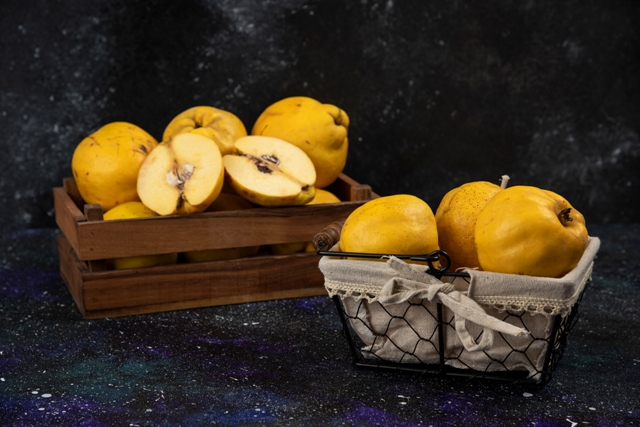
Source:
Fattouch, S., Caboni, P., Coroneo, V., Tuberoso, C.I., Angioni, A., Dessi, S., Marzouki, N. and Cabras, P., 2007. Antimicrobial activity of Tunisian quince (Cydonia oblonga Miller) pulp and peel polyphenolic extracts. Journal of Agricultural and Food Chemistry, 55(3), pp.963-969.
Hamauzu, Y., Inno, T., Kume, C., Irie, M. and Hiramatsu, K., 2006. Antioxidant and antiulcerative properties of phenolics from Chinese quince, quince, and apple fruits. Journal of Agricultural and Food Chemistry, 54(3), pp.765-772.
Hegedűs, A., Papp, N. and Stefanovits-Bányai, É., 2013. review of nutritional value and putative health-effects of quince (Cydonia oblonga Mill.) fruit. International Journal of Horticultural Science, 19(3-4), pp.29-32.
Hussain, S.Z., Naseer, B., Qadri, T., Fatima, T. and Bhat, T.A., 2021. Quince (Cydonia oblonga)—Morphology, Taxonomy, Composition and Health Benefits. In Fruits Grown in Highland Regions of the Himalayas (pp. 49-62). Springer, Cham.
Rather, G.A., Bhat, M.Y., Sana, S.S., Ali, A., Gul, M.Z., Nanda, A. and Hassan, M., 2020. Quince. In Antioxidants in fruits: Properties and health benefits (pp. 397-416). Springer, Singapore.



